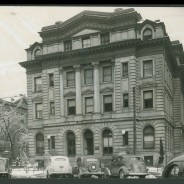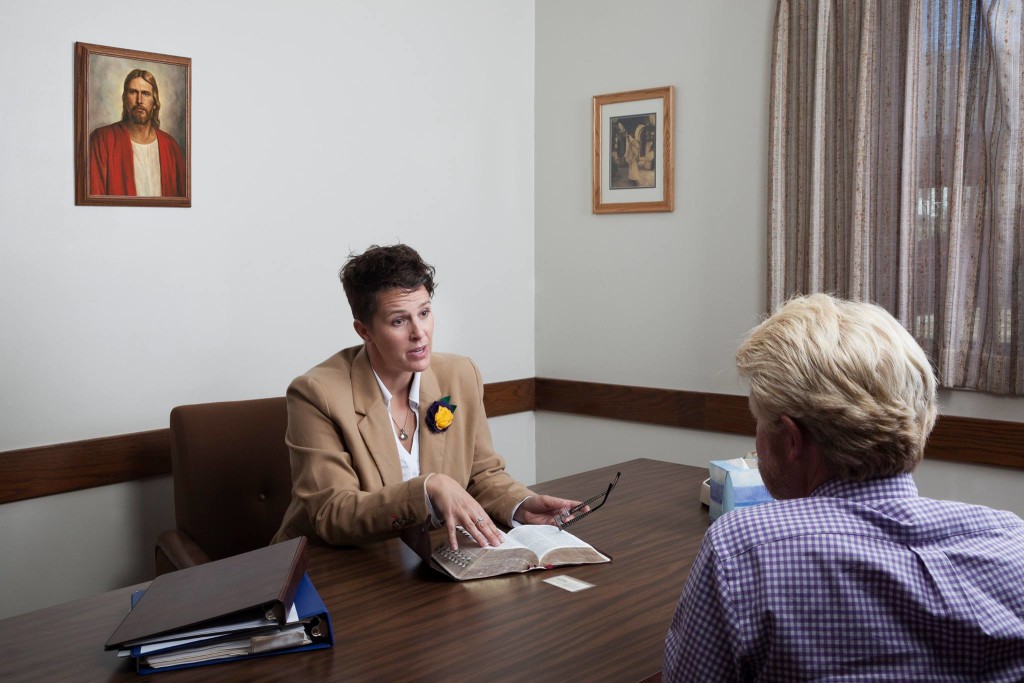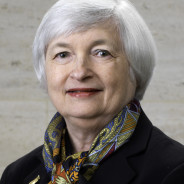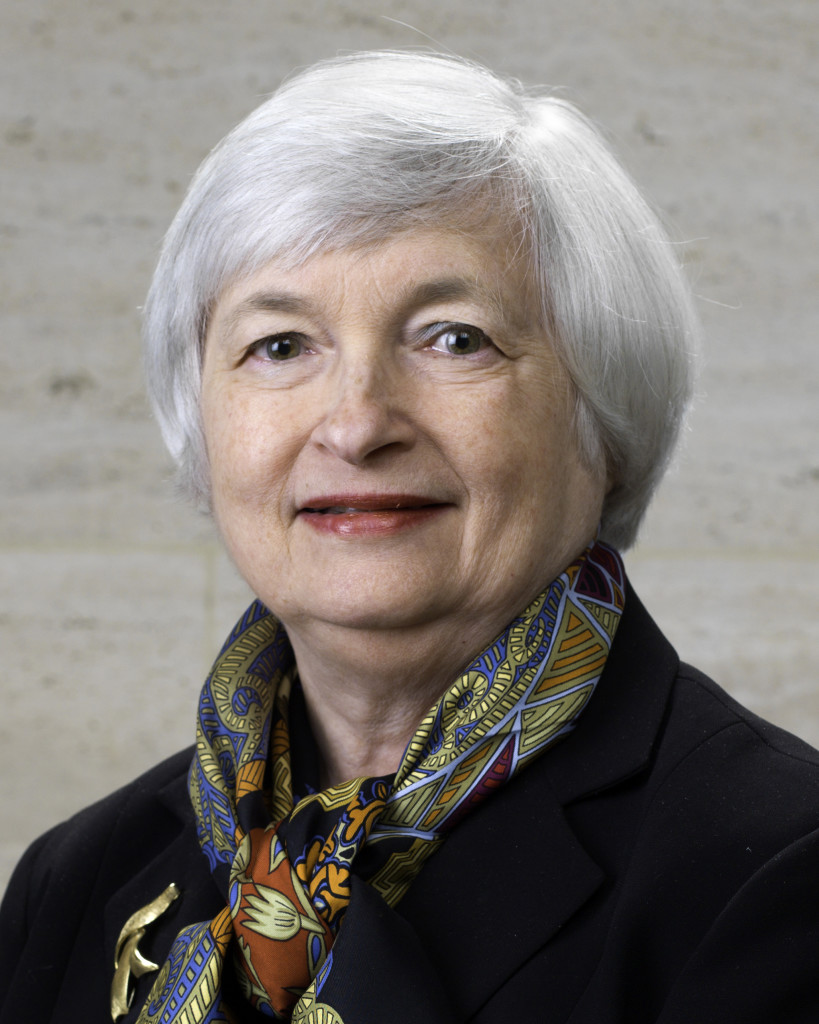Reflections of a Flawed Past- Visions of a Better Future
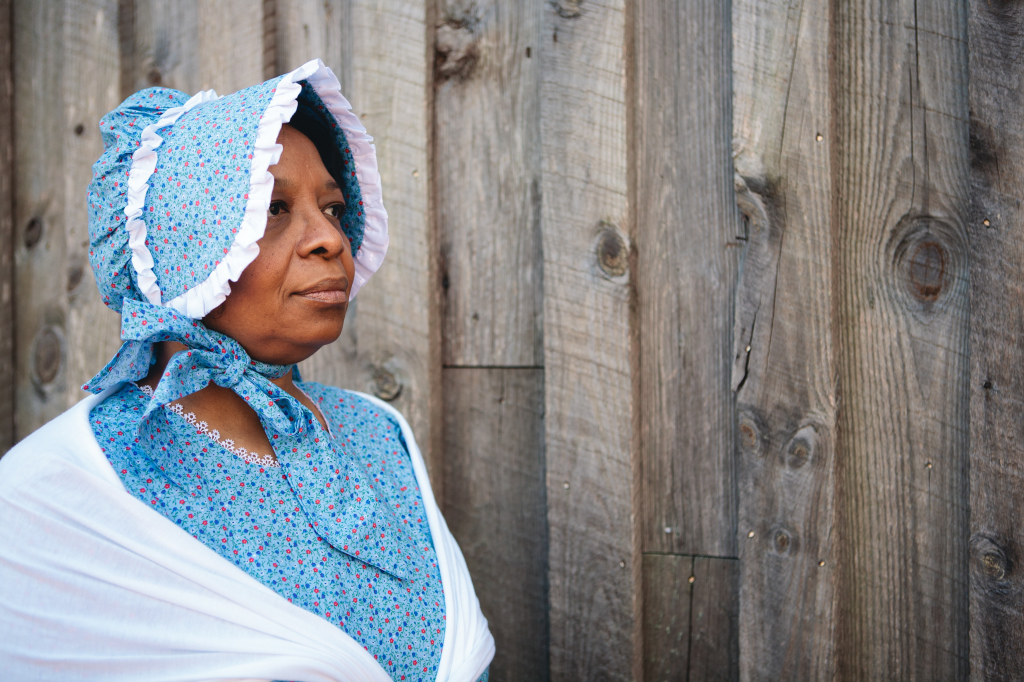
There is neither Jew nor Greek, there is neither bond nor free, there is neither male nor female; [there is neither black, nor brown, nor red, nor yellow, nor white]: for ye are all one in Christ Jesus. Galatians 3:28 (KJV, Edited and enhanced for inclusivity)
. . . and he denieth none that come unto him, black and white, bond and free, male and female; and he remembereth the heathen; and all are alike unto God, both Jew and Gentile. 2 Nephi 26:33
“We all should know that diversity makes for a rich tapestry, and we must understand that all the threads of the tapestry are equal in value no matter what their color.” – Maya Angelou
During the month of January 2015, in keeping with the Ordain Women theme of “honoring our past, envisioning our future,” we created and shared several photographic and videographic images and illustrations. Those images and illustrations depicted how it would have looked it in the past when LDS women were authorized to and did administer blessings and how it could look in the future when we are once again authorized to administer blessings and when we receive authority to perform sacred ordinances.[i]
Like many of you, I have been moved deeply by these images and illustrations of the past. I have read the words strong, brave LDS women used when they washed, anointed, and blessed their sisters and their children and have rejoiced in the strength and power of those words. [ii] I have listened to the reading of the words of a blessing and anointing in preparation for childbirth and have felt the spirit of those women as they administered to their sisters.[iii] I have spent many hours reviewing various publications that recount the history of LDS women administering blessings. I have celebrated that history and I have longed for the spiritual authority held and exercised by LDS women in earlier Church days.
However, as an African American woman, the joy I felt in celebrating the history of LDS women administering blessings has been mixed with a tinge of sadness and perhaps even bitterness–feelings that I vacillated between struggling to subdue and struggling to understand. I kept wondering why this history evoked these feelings in me and why I could not join, completely and wholeheartedly, in the celebration of the history of my sisters.
Somewhere around the middle of the month, a thought began to ring through my head like a clarion call and I realized that my mixed feelings, my ambivalence, and my struggles could all be traced to one simple fact: That history did not include anyone who looked like me.
As I continued to think and ponder, the full weight of the situation and my feelings descended upon me. I realized that I could not fully and completely honor the past because the past that was being honored not only did not include women who looked like me, but it specifically excluded women who looked like me. I shed tears of sadness and anger as I thought about how our sisters of African descent–sisters who looked like me–were not allowed to participate in the administering of blessings or to attend the Temple, not because of any divine prohibition, not because they lacked faith, not because they were unworthy, but SOLELY because of the color of their skin. As I shed tears for and drew inspiration from their history, I knew that no attempt to honor our past could be complete without honoring these brave women of African descent, who kept the faith and lovingly served the LDS Church even as the Church relegated them to a status less than second-class membership. These are their stories.[i]
Jane Elizabeth Manning James (September 22, 1822 – April 16, 1908)[i]
Jane Elizabeth Manning James was born on September 22, 1822 in Wilton, Connecticut. She converted to the LDS Church when she was about 16 years old. A year or so after she was baptize, she and several members of her family decided to make the journey to Nauvoo, Illinois, to join other Church members. They travelled the first part of their journey, from Connecticut to Buffalo, New York, without incident. However, when they reached Buffalo, they were not allowed to continue their journey via steamboat even though they had already paid their fares and their bags were already on the boat. They then had no choice but to forfeit the money already paid, leave all their belongings on the boat, and travel by foot for a distance of more than 800 miles. Jane’s description of that long journey is both a heartbreaking account of her struggles and a beautiful tribute to her faith.
We walked until our shoes were worn out, and our feet became sore and cracked open and bled until you could see the whole print of our feet with blood on the ground. We stopped and united in prayer to the Lord; we asked God the Eternal Father to heal our feet. Our prayers were answered and our feet were healed forthwith.
When we arrived at Peoria, Illinois, the authorities threatened to put us in jail to get our free papers. We didn’t know at first what he meant, for we had never been slaves, but he concluded to let us go. So we traveled on until we came to a river, and as there was no bridge, we walked right into the stream. When we got to the middle, the water was up to our necks but we got safely across. Then it became so dark we could hardly see our hands before us, but we could see a light in the distance, so we went toward it. We found it was an old Log Cabin. Here we spent the night. The next day we walked for a considerable distance, and stayed that night in a forest out in the open air.
The frost fell on us so heavy, it was like a light fall of snow. We arose early and started on our way walking through that frost with our bare feet, until the sun rose and melted it away. But we went on our way rejoicing, singing hymns, and thanking God for his infinite goodness and mercy to us–in blessing us as he had, protecting us from all harm, answering our prayers, and healing our feet.
In course of time, we arrived at La Harpe, Illinois–-about thirty miles from Nauvoo. At La Harpe, we came to a place where there was a very sick child. We administered to it, and the child was healed. I found after [that] the elders had before this given it up, as they did not think it could live.
We had now arrived to our destined haven of rest: the beautiful Nauvoo! Here we went through all kinds of hardship, trial and rebuff, but we at last got to Brother Orson Spencer’s. He directed us to the Prophet Joseph Smith’s mansion. When we found it, Sister Emma was standing in the door, and she kindly said, “Come in, come in!”
Jane and her family members then set about building lives for themselves in Nauvoo. When all of Jane’s family members we able to find homes and work except her, she became somewhat discouraged. However, Joseph and Emma Smith offered to let her live with and work for them. Jane’s description of her life with the Smith family reflects that she had a very close relationship with them. The description recounts how Lucy Mack Smith (Joseph’s mother) allowed Jane to handle a “bundle” containing the Urim and Thummin and how Emma asked Jane if she would like to be adopted into the Smith family, a proposal which Jane did not accept at the time.
While living in Nauvoo, Jane met Isaac James, who had relocated from New Jersey. Jane and Isaac were married a few months after the deaths of Joseph and Hyrum Smith. They then joined other Church members on the long trek to Utah. There, Jane and Isaac acquired land and livestock and worked hard to raise and provide for their children. In 1869, however, Isaac made the decision to leave Utah and his family.
Jane remained a faithful, tithe-paying member of the Church. In her desire to receive all of the blessings in store for her, including the blessings as exaltation, she repeatedly petitioned the First Presidency and other Church leaders to be endowed and sealed. However, her petitions were not granted.
In 1884 she sent a letter to President John Taylor, and asserted that as a child of Abraham, she should be eligible for exaltation. Jane concluded her letter with the plaintive plea: “Is there no blessing for me?” Despite her plea, her petition was still not granted.
Since her husband was no longer with her, Jane then requested that she and her children be sealed to Walker Lewis, an African American who had been ordained to the priesthood during Joseph Smith’s lifetime. In 1890, she submitted a petition to Apostle Joseph F. Smith in which she wrote:
Dear Brother – – Please excuse me taking the Liberty of Writing to you – but be a Brother by answering my questions – There by satisfying my mind – – First, as Brother James [her husband Isaac] has Left me 21 years – And a Coloured Brother, Brother Lewis wished me to be sealed to Him, He has been dead 35 or 36 years – can i be sealed to him – parley P Pratt or dained Him an Elder. When or how[?] can i ever be sealed to Him.
That petition was not granted.
In 1894, Jane submitted yet another petition to be endowed and sealed. In that petition, she relied upon Emma’s offer to adopt her and asked to be sealed to Joseph Smith, Jr., and his family. President Wilford Woodruff met with her personally to discuss this petition, but it was still not granted. President Woodruff wrote in his journal on October 16, 1894: “Black Jane wanted to know if I would let her have her endowments in the temple [.] This I could not do as it was against the law of God as Cain killed Abel all the seed of Cain would have to wait for redemption until [sic] all the seed that Abel would have had that may come through other men can be redeemed.” (Emphasis added).
In an effort to pacify Jane, the First Presidency “decided she might be adopted into the family of Joseph Smith as a servant, which was done, a special ceremony having been prepared for the purpose.” The ceremony took place on May 18, 1894 at the Salt Lake Temple. Joseph F. Smith acted as proxy for Joseph Smith, and Bathsheba W. Smith acting as proxy for Jane because, as a woman of African descent, Jane was not permitted to enter the temple. In the ceremony, Jane was “attached as a Servitor [servant] for eternity to the prophet Joseph Smith and . . . his family” and “instructed to be obedient to him in all things in the Lord as a faithful Servitor.”
Understandably, Jane, who had been born as a free person, was not satisfied with being sealed to the Smith family as a servant. So, in August 1895, a little more than a year later, she again petitioned to be sealed to the Smiths through the ordinance of adoption. However, she was again denied.
In 1902, Jane again petitioned to be sealed to the Smith family as an adopted family member and not a servant. The minutes of a 1902 meeting of the Council of the Twelve report that “Aunt Jane was not satisfied with this [sealing], and as a mark of her dissatisfaction she applied again after this for sealing blessings, but of course in vain.” That petition was again denied.
Jane’s final petition was made on August 31, 1903, to President Joseph F. Smith. There is no record of the response, if any, to that petition.
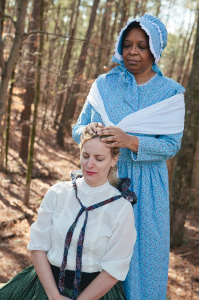 No one ever questioned Jane’s faith or her worthiness. Nonetheless, all of her petitions were either denied or left unanswered solely because she was of African descent.
No one ever questioned Jane’s faith or her worthiness. Nonetheless, all of her petitions were either denied or left unanswered solely because she was of African descent.
Mary Ann Adams Abel (December 24, 1829 – November 27, 1877)[i]
Very little is known about Mary Ann. On February 16, 1847, she married Elijah Abel, who she met when he relocated in Cincinnati after serving a mission in New York.
Elijah was the first African American to be ordained as an Elder and a Seventy. Elijah, who was a skilled carpenter, worked on the Kirtland and Nauvoo Temples. After Mary Ann and Elijah relocated to Salt Lake, they managed the Farnham Hotel and Elijah used his carpentry skills to help build the Salt Lake Temple.
In 1853, Elijah sought to receive his own endowments. Although no account specifically states that Elijah’s request included Mary Ann, one would presume that it did. Despite the faithfulness of Mary Ann and Elijah and despite the fact that Elijah had helped to build three temples, the request was denied by Brigham Young, solely because of their skin color.
Amanda Leggroan Chambers (January 1, 1844 – March 2, 1925)[i]
Amanda was born a slave in Noxubee County, Mississippi. Although little is known about her early history, she married Samuel Chambers on May 4, 1858; she was his second wife. Samuel had joined the LDS Church as a convert when he was 13 years old, and later had a son, Peter, from his first marriage. Amanda and Samuel remained steadfast in their faith, even though they and their immediate and extended family members were the only LDS members in the area.
After Samuel and Amanda were freed from slavery in 1865, they began saving money so that they could make the journey west to Utah to join other members of the LDS Church. They began their journey in 1870 and arrived in Salt Lake on April 27th of that year. Amanda and Samuel were active members of the LDS church and faithfully paid their tithes; in fact, they were reportedly the largest tithe payers in their ward for a long time. Amanda and Samuel also contributed faithfully to the temple fund even though Samuel could not receive the priesthood and neither Amanda nor Samuel was able to enter the temple or partake of any of its blessings. While we can take some comfort in knowing that the ordinance work for Amanda and Samuel was done on April 13, 1984, we must acknowledge the ugly truth that Amanda, a faithful LDS woman, was denied the blessings of that work for almost sixty (60) years.
I have shed many tears and drawn much inspiration from the histories of Jane and Mary Ann and Amanda. I have also shed tears for and drawn inspiration from other African American women, whose faith was just as strong as theirs, but whose stories have not been recorded and who must rely on us to make sure that their names and their stories are discovered and remembered. I promised myself that I would work diligently on this task.
With the names and histories of these faithful African American women running through my head, every fiber of my being compelled me to become integrally and intimately involved in making sure that no blessings of our faith are ever again denied to anyone because of the color of her or his skin. While neither I, as an individual, or Ordain Women, as a group, could do anything to change the historical pictures and accounts, we could make our newly created images of the past reflective of the unifying and uplifting truths expressed in Galatians 3:28 that “[w]e are all one in Christ Jesus” and in 2 Nephi 26:33 that “all are alike unto God.”
With those goals in mind, I eagerly stepped forward to participate in making those newly created images. As I was doing so, I felt transported across time and space and connected with all of my sisters of African descent whose blessings were denied or delayed. I experienced an awe-inspiring vision of what could have been in the past and what can be in the future. I can testify that I have communed with the Spirit and have received personal confirmation that my vision is in keeping with divine will.
There is much work to be done to make amends for the wrongs of our past. However, when I envision our future as LDS women, I envision a future where we recognize and implement and live the basic truth in Maya Angelou’s words that diversity makes for a rich tapestry, and we must understand that all the threads of the tapestry are equal in value no matter what their color.” I know that any effort to bring about gender equality in the LDS Church that does not include every woman of every race, color, national origin, or culture will not achieve true equality. Instead, it would only be another indignity and another insult to Jane Elizabeth Manning James, Mary Ann Adams Abel, Amanda Leggroan Chambers, and other women of African descent who were denied opportunities to partake of and participate in the blessings and rituals and ordinances of the Church we love.
So, let us honor and celebrate our past. However, let us also openly and honestly acknowledge the mistakes, the hurts, and all the unpleasant truths about that past. Let us repent of and make amends for all of our sins, whether they were of omission or commission. Let us covenant together that we will not make those same mistakes or commit those same sins again. In so doing, we will be able not only to envision but to walk boldly into a future where LDS women reclaim the spiritual authority and power exercised by our sisters in the past, where the daughters of Jane and Mary Ann and Amanda stand on equal footing with the daughters of Eliza and Zina and Patty, and where they ALL have achieved equality in faith with their brothers.
[1]With all of the images and illustrations, Ordain Women has acted in compliance with current church policy and no actual ordinances took place in the making of these images and illustrations.
[1]Eliza Snow said “[a]ny and all sisters who honor their holy endowments, not only have the right, but should feel it a duty whenever called upon to administer to our sisters in these ordinances [of healing the sick], which God has graciously committed to His daughters as well as to His sons; and we testify that when administered and received in faith and humility they are accompanied with all mighty power. Inasmuch as God our Father has revealed these sacred ordinances and committed them to His Saints, it is not only our privilege but our imperative duty to apply them for the relief of human suffering.”-Woman’s Exponent, 13 (15 September 1884): 61.
Zina D. H. Young said, ‘’[i]t is the privilege of the sisters, who are faithful in the discharge of their duties, and have received their endowments and blessings in the house of the Lord, to administer to their sisters, and to the little ones, in time of sickness, in meekness and humility, ever being careful to ask in the name of Jesus, and to give God the glory.”- Woman’s Exponent , 17 (15 Aug. 1889): 172.
Patty Bartlett Sessions, who was called by Brigham Young to serve as a midwife and who practiced her profession until she was 85 years old, wrote “I felt as though I must lay hands on her. I never felt so before without being called on to do it. She said, ‘Well, do it.’ I knew that I had been ordained to lay hands on the sick and set apart to do that. She had been washed clean and I anointed, gave her some oil to take, and then laid hands on her. I told her she would get well if she would believe and not doubt it.”–Rugh, Susan (1978), “Patty Bartlett Sessions: More than a Midwife”, in Vicky Burgess-Olson, Sister Saints, Brigham Young University Press, pp. 303–322, ISBN 0-8425-1235-7
[1]This transcript was preserved by Oakley Idaho Second Ward Relief Society Minute Book in 1909 :
We anoint your back, your spinal column that you might be strong and healthy that no disease fasten upon it, no accident [befall] you, your kidneys that they might be active and healthy and [perform] their proper functions, your bladder that it might be strong and protected from accident, your Hips that your system might relax and give way for the birth of your child . . . . your breasts that your milk may come freely and you need not be afflicted with sore nipples as many are, your heart that it may be comforted. . . . [your baby that it may be] perfect in every joint and limb and muscle, that it might be beautiful to look upon . . . [and] happy and that when [its] full time shall have come that the child shall present right for birth and that the afterbirth shall come at its proper time . . . [that] you need not flow to excess . . .
We anoint . . ., your thighs that they might be healthy and strong that you might be exempt from cramps and from the bursting of veins . . . That you might stand upon the earth [and] go in and out of the Temples of God.
. . . We unitedly lay our hands upon you to seal this washing and anointing wherewith you have been washed and anointed for your safe delivery, for the salvation of you and your child and we ask God to let his special blessings rest upon you, that you might sleep sweet at night, that your dreams might be pleasant and that the good spirit might guard and protect you from every evil influence, spirit, and power that you may go your full time and that every blessing that we have asked God to confer upon you and your offspring may be [literally] fulfilled that all fear and dread may be taken from you and that you might trust in God. All these blessings we unitedly seal upon you in the name of Jesus Christ. Amen. (Emphasis added).
–See, Linda King Newell. “A Gift Given: A Gift Taken: Washing, Anointing and Blessing the Sick Among Mormon Women.” Sunstone Vol. 22 (1999): 30-43.
[1] No one knows how these African American women would have felt about the ordination of women, and I do not include their stories to suggest or imply that they would have supported the ordination of women. Instead, I include their stories because they have been inspirational and instructional to me, as an African-American woman and a convert, as I have endeavored to find my place in the Church.
[i] The information concerning Jane Elizabeth Manning James can be found in the following sources:
-“Death Certificate.” State of Utah. April 17, 1908; Jane Elizabeth Manning James. (2014, September 3). Retrieved February 3, 2015 from http://axaem.archives.utah.gov/cgi-bin/indexesresults.cgi?RUNWHAT=IDX20842-IMAGE&KEYPATH=IDX208420016664
-In Wikipedia, The Free Encyclopedia. Retrieved 13:56, February 3, 2015, from http://en.wikipedia.org/w/index.php?title=Jane_Elizabeth_Manning_James&oldid=623991185, referencing Excerpts from the Weekly Council Meetings of the Quorum of Twelve Apostles, Dealing with the Rights of Negroes in the Church, 1849-1940″. George Albert Smith Papers (University of Utah) and Salt Lake Temple Adoption Record: Book A. May 18, 1894. p. 26.
Smith, Becky Cardon (2005-04-15). “Remembering Jane Manning James”. Meridian Magazine. Retrieved February 3, 2015, from http://web.archive.org/web/20100206222448/http:/meridianmagazine.com/people/050415jane.html.
-O’Donovan, Connell (2006). “The Mormon Priesthood Ban & Elder Q. Walker Lewis: ‘An example for his more whiter brethren to follow’”. John Whitmer Historical Association Journal. (Online reprint with author updates) quoting letter from Jane Elizabeth Manning James to Joseph Fielding Smith, February 7, 1890, LDS Church Archives, transcript in his possession. Retrieved February 3, 2015, from http://people.ucsc.edu/~odonovan/elder_walker_lewis.html
-Mueller, Max (Winter–Spring 2011). “Playing Jane: The history of a pioneer black Mormon woman is alive today”. Harvard Divinity School Bulletin 39 (1 & 2) quoting letter from Jane to President John Taylor. Retrieved February 3, 2015 from http://bulletin.hds.harvard.edu/articles/winterspring2011/playing-jane
-James, Jane E. Manning. Transcribed by Elizabeth J. D. Roundy. “My Life Story”. Wilford Woodruff Papers (Salt Lake City, Utah: Historical Department, The Church of Jesus Christ of Latter-day Saints).
–Newell, Linda King; Avery, Valeen Tippetts (August 1979). “Jane Manning James: Black Saint, 1847 Pioneer”. Ensign (Salt Lake City, Utah: LDS Church). Retrieved on February 3, 2015, from https://www.lds.org/ensign/1979/08/jane-manning-james-black-saint-1847-pioneer?lang=eng
-Young, Margaret Blair. “Jane Manning James: An Independent Mind”. http://www.patheos.com/Mormon/Jane-James-Margaret-Blair-Young-09-10-2012?offset=0&max=1
[i] The information concerning Mary Ann Adams Abel can be found in the following sources:
-Jackson, W. Kesler, Elijah Abel: The Life and Times of a Black Priesthood Holder. (Springville, Utah: CFI, 2013) 72-73.
-Elijah Abel. (2015, January 20). In Wikipedia, The Free Encyclopedia. Retrieved 15:55, February 3, 2015, from http://en.wikipedia.org/w/index.php?title=Elijah_Abel&oldid=643428946
-“Elijah Abel”. http://www.blacklds.org/abel
-“Elijah Abel: Black Mormon Pioneer”. June 8, 2011. 49 Hallelujah Holla Backs! http://sistasinzion.com/2011/06/elijah-abel-black-mormon-pioneer.html
-“Elijah Abel”. http://www.findagrave.com/cgi-bin/fg.cgi?page=gr&GRid=9332072
[i] The information on Amanda Leggroan Chambers can be found in the following sources:
-William G. Hartley, “Samuel D. Chambers,” The New Era 4 (June 1974)
-“Samuel and Amanda Chambers: Lesser-Known Pioneers”. http://www.patheos.com/Mormon/Samuel-Amanda-Chambers-Margaret-Blair-Young-10-15-2012?offset=1&max=1
-“Samuel Davidson Chambers”. http://www.findagrave.com/cgi-bin/fg.cgi?page=gr&GRid=27442128
-“Tell Me the Stories”. June 8, 2011. 28 Hallelujah Holla Backs! http://sistasinzion.com/2011/07/invisable-pioneers.html
-“Samuel and Amanda Chambers.” http://www.blacklds.org/chambers
Ready for Revelation in 2016
 We have moved through January and are now squarely situated inside the year 2016. It’s still cold, but we can see the sun and spring peeking over the horizon, and we are ready to charge with zeal into this new year. In November, I shared the 2016 theme for Ordain Women: Ready for Revelation. What does this mean for us as we move forward this year? We will continue to advocate, as members of the Church of Jesus Christ of Latter-day Saints, for priesthood ordination for all members in good standing, male and female.
We have moved through January and are now squarely situated inside the year 2016. It’s still cold, but we can see the sun and spring peeking over the horizon, and we are ready to charge with zeal into this new year. In November, I shared the 2016 theme for Ordain Women: Ready for Revelation. What does this mean for us as we move forward this year? We will continue to advocate, as members of the Church of Jesus Christ of Latter-day Saints, for priesthood ordination for all members in good standing, male and female.
This advocacy will be demonstrated in many forms. First, we will maintain a continued online presence through our website and blog. These are spaces wherein supporters of Ordain Women share their personal stories and testimonies of religious gender equality. Second, our social media accounts will remain places where important conversations about the impact of religious gender inequality on all of us. And third, we will return to the in-person strategic actions that have been so spiritually uplifting for our supporters.
So what does this mean for you, our supporters? In 2016, there will be several ways for people to be directly involved. And in the spirit of the new year, I present to you
Five Ordain Women Resolutions:
- Continue to visit our website and blog and when you see something you like, or that makes you think, or that challenges your ideas, share it. If it spoke to you, it will speak to others.
- If you haven’t yet, make it a resolution to write and submit your profile in 2016! And if you have already submitted a profile, invite a friend to submit one. The profiles are works of beauty and self-respect, I can testify that sharing mine 3 years ago was one of the most spiritually empowering things I have ever done. We welcome all voices, as long as they can end their profile with the words “I believe women should be ordained.”
- Join the conversation on our Facebook, Twitter, Instagram, and other social media accounts. We strive to maintain a positive atmosphere that is honest, challenging, and respectful. If you can join us, we’d love to have you.
- When you see the inequality in your own stake, ward, or community, talk to your leaders about it. Share your concerns, your fears, your prayers, your hopes. If you feel comfortable, ask them the hard questions. But at the very least, help them see it.
- Join our actions! Past actions have been described as spiritual and beautiful, both by participants and observers, and this year will be no different. If you can participate in person, count on April 1, 2, and 3 in Salt Lake City. If you cannot be there in person, we have made sure to provide several avenues for you to be part of the campaign.
Just like other resolutions, you should seriously consider which one (or more) of these suggestions is the most appropriate for you. I hope you take some time to think and pray about religious gender inequality and the LDS Church and I invite you to be a part of Ordain Women in whatever way the spirit moves you.
Debra Jenson serves as chair of the Ordain Women executive board.
Black History Month
I once was gifted a stack of old newspapers from my father. It sounds like a prank, but I have a predilection for historic moments and he knew I would appreciate going through a pile of monumental headlines. These are stories from events that shaped the world before I was born: Kennedy’s assassination, Nixon resigns. They did not directly affect me, but they made the world I live in. One of my most treasured items is a front-page article that reads “LDS Head Says Blacks to Achieve Full Status.” It’s an article from September of 1972 that quotes Prophet and President David O. McKay saying, “The Negro will achieve full status; we’re just waiting for that time.”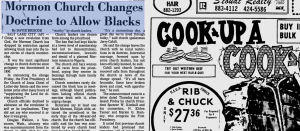
It took six years of public protests from NCAA athletes who refused to play BYU and countless private meetings between LDS General Authorities and Mormons who were people of color. We now know it also took a new prophet, closed-door maneuvering, and months of prayer on the part of President Spencer W. Kimball.[1] This work changed the face of the LDS Church community and was most assuredly to our benefit because equality affects us all. The impact of the 1978 revelation cannot be overstated.
As Mormons, we should recognize the role our church played in relegating people of color to second-class citizens, both in our country and our faith. Our leaders argued forcefully against the Civil Rights Act of 1964 and it took more than a decade before anything similar came to the organizational structure of our church.[2] As we move through the month of February, we have the opportunity to honor and celebrate Black History Month. Ordain Women will be sharing blog posts, both from our own supporters and from other sources. This is an opportunity to learn about our place in this history and how that history shapes the church and community we live in today. I hope each of us will take the time to read and seriously consider what is shared, and that we will join the conversation; that we will ponder deeply where we can be better members of our heavenly family and then we will act accordingly.
[1] Edward L. Kimball, “Spencer W. Kimball and the Revelation on Priesthood,” BYU Studies 47 no. 2 (2008).
[2] Ed Brayton, “Mormons and the Civil Rights Act,” www.Patheos.com. http://www.patheos.com/blogs/
Debra Jenson serves as chair of the Ordain Women executive board.
Ready for Revelation
The story of black women within the Mormon church has often been ignored. Instead, we focus on those whose oppressions are easily categorized without intersections. The racial oppression of black men through their exclusion of the Priesthood and the pious suffering of white women as they endured the sacrifices and the sexism of polygamy take center stage. At best, black women are a distant afterthought.
Black women were not allowed to receive any Temple ordinances before the removal of the Temple and Priesthood ban in 1978. The announcement focused on black men being able to receive the Priesthood and skimmed over the black women who had been waiting patiently to faithfully enter the Temple. Black women, for the first time in Mormon history, were finally (in policy) elevated to the same status as white women and other women of color.
The history of equality in the Mormon Church (and really US history) usually focuses on binaries. As a black woman, my history has been conflated with either that of black men or that of white women. Each option only represents a portion of who I am and ignores that my identity as a black-biracial person cannot be divorced from my identity as a woman. I experience both identities concurrently and without separation in my interactions with the world and the Church.
I share the reason that I cannot separate my identity as a woman from my blackness to explain one of the reasons that I support the ordination of women and Ordain Women. I don’t support Ordain Women despite being a black-biracial woman; I support Ordain Women because I am a black-biracial woman who greatly desires the eradication of racism and sexism from our religion. The ordination of women would be the first time that a Priesthood ordinance would be extended to women regardless of race at its introduction. It is an equalizing factor in more ways than one. Not only will men and women have access to the Priesthood, but for the first time, the extension of Priesthood authority will be completely devoid of racial discrimination. This is what equality looks like to me: All women receiving ordination at the exact same time, moving forward as siblings and equals within the kingdom of God.
I am a black-biracial woman of color, and I wholeheartedly support the ordination of women to the Priesthood. I am ready for revelation.

Ready for Revelation
Natasha Smith, the author of this post, sits on the Ordain Women Executive Board and serves as Chair of the Intersectionality Committee.
How Mormon Women Were Correlated Out of LDS Church Finances
In 1876, Emmeline Wells was called to lead the other sisters of the Relief Society in a grain storage program. The program was both time and resource-intense, with the women required to raise funds for grain, fields and granaries, as well as perform much of the manual labor themselves. During emergencies such as the San Francisco earthquake of 1906, the General Relief Society presidency authorized and coordinated distribution of the grain to those in need. (Embry, J.L.) (Daughters in my Kingdom)
It was a complicated endeavor, made more complicated by frequent attempts by male priesthood leaders to get control of grain program resources for other purposes. In 1883, President John Taylor attempted to put a stop to this behavior with a memo to bishops stating that “the wheat has been collected by members of the [female Relief] Society…and they are the proper custodians thereof…No bishop has any right because of authority as a presiding officer in the ward, to take possession of the grain.” (Embry, J.L.)
This message was reiterated in 1896 by President Wilford Woodruff, who affirmed that even the president of the Church “had no right to take a handful of wheat and dispose of it.” (Embry, J.L.)
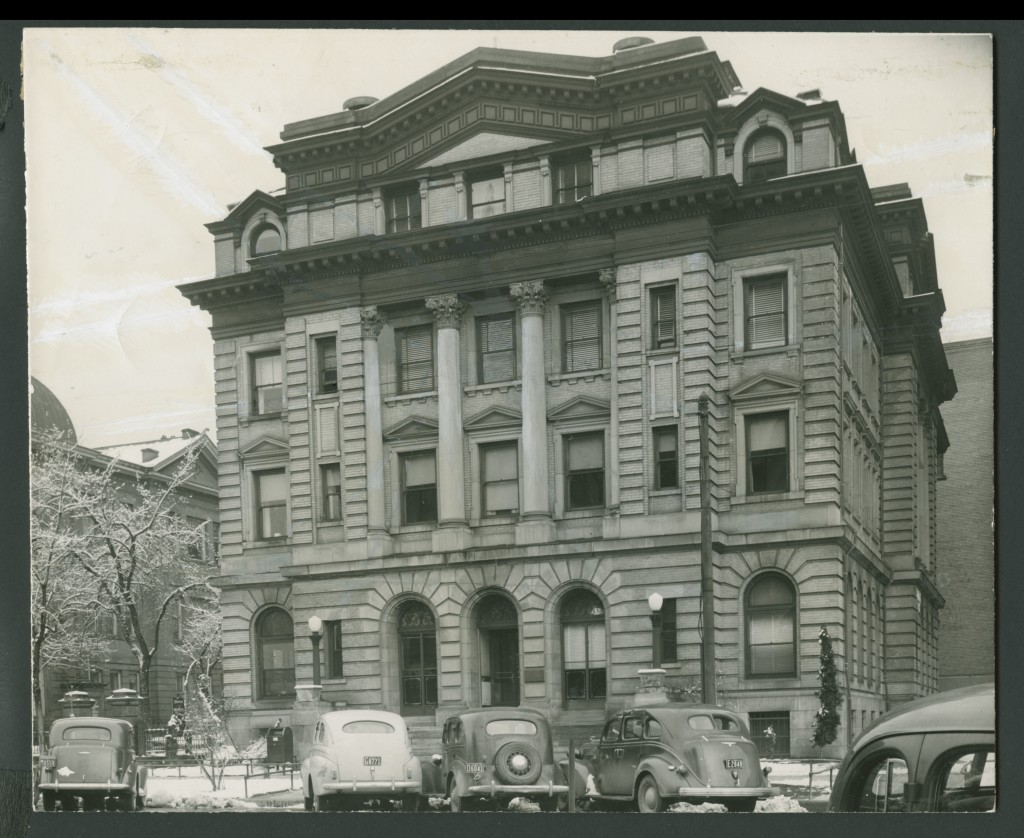
But President Lorenzo Snow acknowledged that the problem continued to recur in 1901, when he told the female Relief Society, “You are the only ones among the Saints who are doing anything in a financial way against a day of famine. Your work in this direction is most commendable and I hear as a result that you have 103,783 bushels of grain, together with an amount of flour and beans, safely stored away against a time of need, as well as $3,331 to expend for the same purpose. I understand that in some few instances your labors in this direction have been interfered with but I hope that hereafter there will be no occasion for complaint on that point.” (Deseret Evening News: July 9, 1901)
In that same speech, Snow commended the women for another financial endeavor: “I understand that one of the objects of this excursion is to raise funds towards the proposed women’s building in Salt Lake City…that will be suitable as headquarters for the Relief Society, the Young Ladies Mutual Improvement Association, and the Primary Association… I hope to see a handsome structure reared and I anticipate soon having the pleasure of meeting with you in it… You are now 30,000 strong, I am told, with a building fund of nearly $5,000 and with upwards of $100,000 worth of property in your possession.” (Deseret Evening News: July 9, 1901) At the time, the Relief Society raised its own funds and maintained its own real estate. They began fundraising efforts for a headquarters building in 1896 and in 1900, Snow designated a lot for the Relief Society to build on. (history.lds.org) (Parshall, A.E.)
But Snow did not realize his wish to meet with the Relief Society sisters in their new building, nor was he able to fulfill his promise to protect their efforts and resources from male interference. He died only three months after giving this speech. The next president of the church, Joseph F. Smith, envisioned a church in which there would “not be so much necessity for work that is now being done by the auxiliary organizations because it will be done by the regular quorum of the Priesthood.” (Goodman, M.A.) (Teachings of the Presidents of the Church: Joseph F. Smith)
Smith was frustrated by how little priesthood holders were accomplishing, especially in comparison to “the wide and extensive sphere action” undertaken by the female Relief Society. (Daughters in my Kingdom) (Embry, J.L.)
(Goodman, M.A.) This contrast conflicted with his view of the leadership role of males as priesthood holders and the subordinate role of women as non-priesthood holders. As he explained, “Women are responsible for their acts just as much as men are responsible for theirs, although the man, holding the authority of the priesthood, is regarded as the head, as the leader.” (Teachings of the Presidents of the Church: Joseph F. Smith)
In 1908, Smith assigned a new apostle, David O. McKay, to chair a new General Priesthood Committee with the goal of organizing male priesthood holders to do more work. Later, he also asked McKay to chair the church’s first correlation committee, intended to “prevent the unnecessary and undesirable duplication of work in the various auxiliaries of the Church.” (Goodman, M.A.)
In 1909, after the Relief Society had raised most of the money needed to build their headquarters, Smith reversed his predecessor’s decision and reassigned the lot intended for Relief Society to the Presiding Bishopric, requiring the women to donate their building fund to the Presiding Bishopric for a Bishops’ Building instead of the long awaited Women’s Building. The Relief Society was granted use of a few rooms within the new building to meet in but as part of this arrangement, the Presiding Bishopric began supervising Relief Society efforts. (Derr, J.M. & Derr, C.B.) (Parshall, A.E.) (history.lds.org)
In 1918, the government of the United States of America requested to purchase the Relief Society grain storage to address worldwide grain shortages. Without consulting the Relief Society, the First Presidency and the Presiding Bishopric sold the Relief Society’s entire grain supply—the work of four decades—and placed the funds from the sale in an account controlled by the Presiding Bishopric, not the Relief Society. Emmeline Wells, now serving as President of the Relief Society, was understandably upset that Relief Society assets had been sold without her permission. Bishop Nibley apologized but also changed policy; going forward, the Presiding Bishopric would have the final say about the Relief Society’s grain program and the moneys resulting from grain sales. (Embry, J.L.)
In 1923, after Heber J. Grant had replaced Joseph F. Smith as president of the church, McKay’s correlation committee submitted a report with a number of recommendations to better coordinate church programs, all of which were rejected by Grant. He announced a different solution instead: “We wish also to have it clearly understood that all auxiliary associations operate under the direct presidency and supervision of stake and ward priesthood authorities, who carry the ultimate responsibility for the work of these organizations.” (Goodman, M.A.)
This policy solution effectively eliminated the problem of male bishops interfering with female Relief Society efforts, not by stopping the behavior, but by authorizing it. Now that such action was within male bishops’ realm of authority, it could no longer be labeled “interference.”
Amy Brown Lyman became General Relief Society President in 1940, the same year that J. Rueben Clark, first counselor in the General Presidency under Heber J. Grant, began a new push for correlation. Clark had several valid concerns that he hoped to address with correlation efforts: reducing the financial cost of church participation to members—such burdens were a particular problem for women, since Relief Society projects were funded by dues and donations—reducing bishops’ workloads, particularly with regards to overseeing auxiliaries—ironically, such burdensome oversight was mandated by Grant’s 1923 policy—the disparity in church services offered to members in and near Utah compared to those farther away; and preventing debt. These ideas clearly influenced Elder Harold B. Lee, who became involved in correlation a few years later and would eventually lead the church’s most expansive correlation movement. (lds.org) (Goodman, M.A.) (Hall, D.)
These concerns, coupled with Clark’s opinion that women should “not try to be anything else but good mothers and good homemakers,” led to Clark’s conclusions that the Relief Society should abandon its educational, cultural, and social services programs, and instead, focus only on the “promotion of faith and testimony” and supporting the new Church Welfare Plan, which happened to have been created by Clark himself. (Hall, D.)
Lyman resisted. She had founded the Relief Society Social Service Department, served as its head for 16 years, authored much of the Relief Society educational and cultural curricula during her 12 years as Relief Society First Counselor, and had served on the Utah Legislature, so she naturally had a much broader agenda in mind for women and the Relief Society than did Clark. Moreover, she did not believe that women would be willing to join and pay dues to an organization with such a confining mission. (lds.org) (Hall, D.)
But she had no power other than influence, and her influence dried up when her husband, apostle Richard R. Lyman, was excommunicated for adultery. Some blamed Amy Lyman’s busy lifestyle for her husband’s actions, instead of—more logically—the fact that he was raised in a polygamous religion where multiple partners was an anticipated privilege of manhood. Clark asked Lyman to resign the Relief Society presidency and she complied. (Hall, D.)
Lyman was replaced by Belle S. Spafford, who was still in office when David O. McKay became president of the church in 1951. McKay had led the LDS Church’s first correlation committee 43 years previous during the Joseph F. Smith administration. Now that McKay was president of the church, he was still interested in correlation, but this time around, he had authority to implement his own recommendations rather than see them vetoed. McKay assigned Elder Harold B. Lee to lead the correlation effort.
Lee shared many of the goals of his predecessors: coordinating services, avoiding duplication, making the church relevant across cultures and geographies, preventing unnecessary work and activities that would overburden church members, and strengthening the leadership role of male priesthood holders. (Teachings of the Presidents of the Church: Harold B. Lee)
Under Lee’s correlation program, the reporting and financing systems, magazine and lesson materials, and social services once managed by the Relief Society became the responsibility of priesthood leaders and professional departments. Spafford cooperated with these changes, but the termination of Relief Society Magazine, in particular, took place against her will. Lyman’s earlier concern that women would not want to join the Relief Society if it abandoned its projects was nullified by making Relief Society membership automatic to all Mormon women in 1971. (Mulvay-Derr, J. & Cannon, J.R.) (Chandler, G.M.) (Hatch, T.)
As part of this correlation effort, in 1978 the Relief Society transferred the last of its assets to the First Presidency: 266,291 bushels of wheat and nearly 2 million dollars in other assets. In exchange, the Relief Society would at last be funded by tithing dollars, saving women from the expense of paying for Relief Society programs with additional money. Mormon women would also cooperate with male priesthood holders in the holistic work of the church through the newly established council system. (Mulvay-Derr, J. & Cannon, J.R.) (Smith, B.B.)
Today, women may provide input on church finances as they serve on church councils but may not make final decisions. Women are always outnumbered by men as a matter of policy and remain excluded from many councils altogether. Women are barred from most LDS finance-related callings and assignments, such as clerk or auditor. In 2015, the church finally admitted women—or rather, one greatly outnumbered woman—to each of three high-level priesthood councils from which women had previously been barred. However, women are still absent from the Council on the Disposition of the Tithes and the Correlation Executive Committee. This is an important oversight, given the impact of correlation on Mormon women over history.
While some nostalgically wish for a reinstatement of the comparative financial independence the female Relief Society enjoyed in the late 1800s, I believe that a gendered division of administrative responsibilities and financial resources was a failed experiment. It was inefficient and led to conflicts between men and women. Since only men were and are priesthood holders, conflicts were resolved over time by removing female authority and placing financial resources under male jurisdiction.
Correlation was an effort to achieve better coordinated, more efficient church governance, but correlating church auxiliaries under the male-only priesthood resulted in the removal of women from church administrative duties and an increasingly androcentric church. Thus, we now find ourselves living a second failed experiment: patriarchal church governance punctuated by inconsistent efforts to either limit or expand female roles in attempts to access female input without losing male control over financial resources.
Ready for Revelation.
April Young Bennett author of today’s post, is a previous Ordain Women board member and writes for Exponent II.
Ordain Women’s Twelve Days of Christmas
This year, Ordain Women began its celebration of the Christmas season by recognizing the season of Advent. On Christmas Day itself, as part of our continued celebration, Board members will be sharing their individual thoughts and testimonies about Christmas. This year, we will also be recognizing the twelve days of Christmas which begin on Christmas Day and end on January 5th, the day before the Feast of the Epiphany.
As part of our recognition, we have created a “wish list” of policy changes in the LDS Church that President Thomas S. Monson could decree. Each one of these changes addresses issues that have been raised by women and men who dream of and pray for a time when there is no more gender inequality in the LDS Church. We have worded this “wish list” so that it could be sung to the tune of “The Twelve Days of Christmas.” We hope that this somewhat lighthearted approach will serve to increase awareness about gender inequality in the LDS Church. We also hope that this approach will make more people wonder why these inequities exist and resolve to work to erase them.
Ordain Women Twelve Days of Christmas
On the first day of Christmas, the Prophet could decree
Full gender parity.
On the second day of Christmas, the Prophet could decree
Moms in blessing circles
and Full gender parity.
On the third day of Christmas, the Prophet could decree
Women as witnesses
Moms in blessing circles
and Full gender parity.
On the fourth day of Christmas, the Prophet could decree
Equal youth budgets
Women as witnesses
Moms in blessing circles
and Full gender parity.
On the fifth day of Christmas, the Prophet could decree
Women should interview girls
Equal youth budgets
Women as witnesses
Moms in blessing circles
and Full gender parity.
On the sixth day of Christmas, the Prophet could decree
Gender inclusive language
Women should interview girls
Equal youth budgets
Women as witnesses
Moms in blessing circles
and Full gender parity.
On the seventh day of Christmas, the Prophet could decree
Women on all councils
Gender inclusive language
Women should interview girls
Equal youth budgets
Women as witnesses
Moms in blessing circles
and Full gender parity.
On the eighth day of Christmas, the Prophet could decree
Husbands not presiding
Women on all councils
Gender inclusive language
Women should interview girls
Equal youth budgets
Women as witnesses
Moms in blessing circles
and Full gender parity.
On the ninth day of Christmas, the Prophet could decree
More quotes from women
Husbands not presiding
Women on all councils
Gender inclusive language
Women should interview girls
Equal youth budgets
Women as witnesses
Moms in blessing circles
and Full gender parity.
On the tenth day of Christmas, the Prophet could decree
Female financial clerks
More quotes from women
Husbands not presiding
Women on all councils
Gender inclusive language
Women should interview girls
Equal youth budgets
Women as witnesses
Moms in blessing circles
and Full gender parity.
On the eleventh day of Christmas, the Prophet could decree
More women speakers
Female financial clerks
More quotes from women
Husbands not presiding
Women on all councils
Gender inclusive language
Women should interview girls
Equal youth budgets
Women as witnesses
Moms in blessing circles
and Full gender parity.
On the twelfth day of Christmas, the Prophet could decree
Women’s ordination
More women speakers
Female financial clerks
More quotes from women
Husbands not presiding
Women on all councils
Gender inclusive language
Women should interview girls
Equal youth budgets
Women as witnesses
Moms in blessing circles
and Full gender parity!
Honoring the past,
Envisioning the Future.
Ordain Women’s Executive Board would like to wish you a joyous holiday season.
Merry Christmas from OW.
Each year I am grateful for time set aside in the calendar to celebrate the many blessings in my life. What a gift it is to spend a day with family and friends, honoring the people who really matter in our lives. I am amazed at all my Heavenly Parents have given me and I hope each day throughout the year that I find a way to thank them by serving Their children on this Earth. Merry Christmas and may the spirit of this season be with you!
Debra Jenson
Each year, just as the sun turns back north toward the long, bright days of summer, Christmas reminds me of the most important things in life. During the coldest, darkest time of the year, we celebrate the birth of a child, who would preach the Gospel of Light, and turn the world on its head. Standing up to the rich and powerful in his own culture, Jesus declared:
Blessed are the poor in spirit: for theirs is the kingdom of heaven.
Blessed are they that mourn: for they shall be comforted.
Blessed are the meek: for they shall inherit the earth.
Blessed are they which do hunger and thirst after righteousness: for they shall be filled.
Blessed are the merciful: for they shall obtain mercy.
Blessed are the pure in heart: for they shall see God.
Blessed are the peacemakers: for they shall be called the children of God.
Blessed are they which are persecuted for righteousness’ sake: for theirs is the kingdom of heaven.
Matthew 5:3-10.
These are the values of the Gospel of Jesus Christ. Jesus preached of a world turned upside down, where love, humility and peace would reign. He rejected the idea that God blesses the rich and powerful, because of their virtue. Instead he preached: “It is easier for a camel to go through the eye of a needle, than for a rich man to enter into the kingdom of God.” Matthew 10:25.
He also rejected the male dominated culture of his time. He praised Mary for sitting at his feet to hear his teachings, rather than do the “women’s work” expected by her culture. Luke 10:38-42. He healed women, who his culture considered unclean. He stopped men intent on stoning a woman for adultery, and was known for having many women in his inner circle. Romans 16: 1-7 tells us that in the early Christian church, women served in many leadership positions, including house church heads, deacons and even apostles. Through his actions and words, Jesus taught us radical equality.
During this Christmas Season, I am blessed to serve on the board of Ordain Women. I am blessed to serve with women and men, who work tirelessly for the radical equality taught by Jesus. I wish you all a very Merry Christmas.
Mark Barnes
Christmas reminds me to look beyond the worldly and into the celestial in order to understand my relation to the things and people around me. It reminds me that the most important thing to remember is that the “worth of souls is great.” As demonstrated by Jesus’ humble and unremarkable beginnings, initial circumstance or material possessions do not determine the worth of any person. We all have worth independent from anything that happens in this world. We are all worthy of love and salvation. We all deserve to be treated with love and respect. We all deserve equality.
Natasha Smith
I know the history behind the Christmas holiday. I know that Christ was most likely born in the spring; I know that the celebration of His birth was moved to the winter solstice to overlap with pagan rituals. But still I love it. I love Christmas music. I love Christmas stories. My favorite Christmas story is “A Christmas Carol.” I identify with Ebenezer Scrooge. Much of the year you’re more likely to find me feeling cynical rather hopeful.
But every year when the weather gets cold, and the lights start to twinkle and “O Holy Night” starts playing on a loop in my head, my heart swells with joy. I love how at every turn there is some song or décor that reminds me of my celebration of my Savior and what He means to me. During the Christmas season, I remember the Prince of Peace more often in my heart and recommit myself to treating others with more kindness and love. I renew my desire to do as Scrooge says, and “I will honor Christmas in my heart, and try to keep it all the year.”
Leah Marie Pickren Silverman
This season I am especially thankful my foremothers and forefathers that gave me the traditions that remind me of my faith and the the foundation I was given. I hope to maintain that for my kids… I hope to give them the knowledge that their faith is worth fighting for. I hope to give them the desire to believe in things not seen and things that are bigger then themselves. I hope they have the confidence to work for and sacrifice for those beliefs. My Holiday wish is that maybe we can all hang onto a little bit of the faith of those that came before and that we can also learn from that shared past, that we can look towards the future and dream of things not seen.
Merry Christmas.
Joanna Wallace
Honoring our Past,
Envisioning our Future.
My donations were not mine….
My first tithing settlement as a married woman stands out as punctuation in my relationship to the church. I was a bride of just six months, and so still in the giddy, newlywed stage. I remember approaching the short meeting with some excitement. I’d attended tithing settlement my whole life with my parents. It was a family thing. A Christmastime tradition, even. And here I was with my husband, my family. It felt like a significant moment for me. I didn’t expect to leave with a hole in my heart.
We sat in front of our bishop as a couple, and he handed over two sheets of paper—one for my husband and one for me. I glanced at my husband’s sheet as our bishop passed it to him and noted a full calendar of tithing payments. I think it may have even been two pages. And then I looked at my own. Maybe two-thirds of a page long. And lacking because it stopped in June. It showed only my first half of the year’s tithing payments.
We had married in June.
From that point on, my tithing payments had been combined with my husband’s payments.
I remember feeling surprised, and confused, and hurt. I felt really hurt. I stumbled through some questions to the bishop, trying to ask why the last half of my tithing record had been erased. But, really, I already knew why. Like I said, I’d gone to tithing settlement with my parents my whole life, and I’m sure I never saw my mom get her own sheet of paper. But I was young and newly married and still naïve about how empowered I thought I was as a Mormon woman in the church. I instinctively knew why, but I couldn’t quite put it into words.
I was hurt—I was devastated—because I’d been erased as a person. As a married woman, I lost autonomy in the church in so many ways, and there were so few ways for me to contribute uniquely to the church in the first place. There are so few things I could point to that symbolized my relationship directly with God. Rather my relationship with God was defined by defined by my relationships with anyone else. That short sheet of paper in my hands at that moment was a physical manifestation of my new lack of personhood.
My husband’s tithing settlement showed an increase in June, of course. My donations were still counted. They just weren’t counted as mine. And this simple financial policy suddenly felt, to me, indicative of everything I had to offer to the church. I was entirely an appendage of my husband, my family, and now my children. In the eyes of the church, I’d become the secondary contributor.
Before leaving the meeting, I asked the bishop if we could undo the change. To my relief, it was possible. Unusual, he said, but the records for married couples can be separated. Of course, each new bishop we’ve had—even a good portion of the many, many financial clerks we’ve had—required a special notice from me that, yes, I would like to make my own separate donations to the church. The church’s impulse to erase me as an autonomous donor follows me wherever I go. Finally, I set up separate tithing accounts for my husband and me to pay directly to church headquarters in Salt Lake City. So, I just needed to explain to the clerk via email, one last time that I do have something to offer the church that is uniquely mine. And I want the record to show it.
Honoring our Past,
Envisioning our Future.
Leah Marie Pickren Silverman, the author of this post, is on Ordain Women’s Executive Board.
Women, Money and Power Janet Yellen, Chair of the Federal Reserve
On February 3, 2014, Janet Yellen became the 15th Chair of the Federal Reserve. As such, Janet Yellen has responsibility over monetary policy and banking regulation in the world’s largest economy. Yet, if Janet Yellen were a Mormon, she would not be allowed to participate in even the most rudimentary financial functions of the LDS Church for one reason, Janet Yellen is female. By virtue of her gender, she would be prohibited from participating in something as basic as counting ward tithing receipts on a Sunday afternoon.
Born in 1946, Janet Yellen grew up in Brooklyn, NY, as the daughter of Jewish immigrants from Poland. In 1967, she graduated Summa Cum Laude in economics from Brown University, and subsequently received her Ph.D. in economics from Yale in 1971. She wrote her dissertation under the supervision of two Nobel Prize winning economists, James Tobin and Joseph Stiglitz. Janet Yellen is also married to the Nobel Prize winner, George Akerlof.
Yellen has been a professor of economics at Berkley, the Chair of the Council of Economic Advisors, and the CEO of the Federal Reserve Bank of San Francisco. Prior to taking the helm at the Federal Reserve, she served as Vice Chair under Ben Bernanke. In short, it is hard to imagine a person more qualified than Janet Yellen to understand economics and finance, yet if she were a Mormon; her gender alone would disqualify her from any participation in church finances.
Ordain Women calls on the leaders of the LDS Church to bring an end to their tragic and sexist policies. As Janet Yellen’s story illustrates, prohibiting women from any role in church finances in illogical. Worse, it sends a message to all Mormon females that they are less capable and less valuable than their male counterparts. It is time that the church empowers its women, and grant full equality within the church. It is time to replace the discriminatory policy of an all male priesthood with a priesthood that includes all who wish to serve God. It is time to Ordain Women!
Honoring our Past,
Envisioning our Future.
Mark Barnes, the author of this post, is on Ordain Women’s Executive Board.
Women, Money and Power The 19th Century Policies of the LDS Church
Based on policies reminiscent of the 19th Century, LDS Women are not allowed to handle church funds. General Handbook of Instructions 1 makes this point clear in section 14.6. Only bishops, stake presidents and their counselors are allowed to receive contributions. Even the preparation of bank deposits is restricted to Melchizedec (higher level) priesthood holders (section 14.6.3), even the receipt of a contribution envelop by a church leader’s wives is strictly forbidden. (Section 14.6.1). Since priesthood is denied to women, no woman in the LDS church has any authority to handle church funds in any way.
In her July 16, 2015 Exponent II article, “Can Mormon Women Count Money,” April Young Bennett summarize the policies that exclude LDS women from any responsibility over church funds. She lists these policies as follows:
- The Deacons Quorum is assigned to collect fast offerings (and consequently, tithes and other donations as well, since they are included on the same tithing slip). Deacons are required to be male and are usually 12 and 13 years old.
- At church services, members must physically place their tithing slips in the hand of a bishopric member. Bishopric members are required to be male.
- Church funds are counted and tracked by Stake and Ward Clerks. Clerks are required to be male.
- The computer equipment and software that stores church financial records is managed by the Technology Specialist. Technology Specialists are required to be male.
- Church funds are audited by Stake Auditors. Stake Auditors are required to be male.
- While female Relief Society presidents may visit families to assess their welfare needs, their authority stops short of approving the dollar value of welfare assistance. Only Bishops may allot fast offerings to needy members. Bishops are required to be male.
- While their council members (a small minority of whom are female) make budget recommendations, decision-making authority over local congregational budgets lies with Bishops and Stake Presidents. Bishops and Stake Presidents are required to be male.
- The Council on the Disposition of the Tithes governs church fiscal policy. It is composed of the First Presidency, the Quorum of the Twelve Apostles, and the Presiding Bishopric, all of whom are required to be male.
It is no secret that money and power are inextricably connected. By denying women authority over money, the church excludes women from any significant power within the faith. In a series of articles, Ordain Women will discuss the connection between the prohibition against woman dealing with money, and their exclusion from power within the church. We will also discuss examples of women, who are known for their expertise in dealing with financial matters; cultural examples where women are known to surpass men in dealing with financial matters; and, legal examples where this type of discrimination against women is prohibited by law, except for the protection the church receives from the first amendment free exercise clause to discriminate.
This type of behavior by the LDS church makes no sense in the modern world. It is a throwback to the days when a woman was legally the property of a man. It reflects the long ago discredited notions that women are beings of lower intellect, creatures of emotion, who are not fit to make the important decisions in this world. Ordain Women categorically rejects this 19th Century view of women, which forms the basis for LDS Church doctrine today. We call on our church leaders to abandon these outdated views of women, and grant women ordination and full equality within the church, including the ability to fully participate in the finances of the church.
Honoring our Past,
Envisioning our Future.
Mark Barnes, the author of this post, is the Board Chair of Ordain Women’s Finance Committee.







